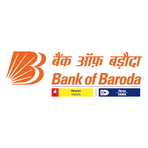Infrastructure Bonds and Metro Projects: The Pulse of Urban Development in India
August 31, 2024, 3:30 am
State Bank of India
Location: India, Maharashtra, Mumbai Metropolitan Region
In the bustling landscape of India’s urban development, infrastructure bonds and metro projects are the lifeblood fueling growth. Recently, the Bank of Baroda raised a staggering Rs 50 billion through long-term infrastructure bonds. This move is a beacon of hope for the economy, signaling robust investment in public infrastructure. The bonds, issued at a 7.30% coupon rate, attracted a flurry of interest, with 146 bids totaling over Rs 150 billion. This overwhelming response underscores the confidence investors have in India's infrastructure potential.
Infrastructure bonds are not just financial instruments; they are the scaffolding of a nation’s growth. They provide the necessary capital to build roads, bridges, and transit systems. The Bank of Baroda's successful issuance reflects a broader trend among Indian banks, including the State Bank of India, which have increasingly turned to these bonds to fund essential projects. The initial base issue was Rs 20 billion, but the bank smartly retained an additional Rs 30 billion through a greenshoe option, showcasing a strategic approach to capital management.
As the economy gears up for recovery, the role of infrastructure becomes paramount. The 14th RAHSTA Expo, part of the India Construction Festival, is set to take place on October 9 and 10, 2024, at the Jio Convention Centre in Mumbai. This event will serve as a platform for industry leaders to converge, share insights, and explore new opportunities in construction and infrastructure development.
Meanwhile, in Kolkata, the East-West Metro has emerged as a lifeline amid civil unrest. As protests erupted on the streets, the metro system became the sole artery connecting Kolkata and Howrah. By 5 PM, it had transported over 47,000 passengers, far exceeding its average daily ridership. This surge highlights the metro's critical role in urban mobility, especially during crises. The East-West Metro, in conjunction with the North-South Metro, is not just a transit system; it is a symbol of resilience and adaptability in the face of challenges.
The metro's success is a testament to the importance of reliable public transport. As cities expand, the demand for efficient transit solutions grows. The East-West Metro's ability to handle increased passenger volumes showcases its potential to alleviate congestion and improve the quality of urban life. Officials anticipate that ridership could surpass the record 70,000 passengers seen on its opening day, a clear indication of its growing significance.
In Mumbai, the Mumbai Metropolitan Region Development Authority (MMRDA) is making strides with the tender issuance for Line 4 of the Mumbai Metro Rail Project. This ambitious project will stretch from Bhakti Park to Mulund Fire Station, encompassing a comprehensive scope of work that includes design, construction, and commissioning of ballastless trackwork. The project, valued at Rs 2 billion, is a critical component of Mumbai's infrastructure expansion. It promises to enhance connectivity and reduce travel times in one of India's most densely populated cities.
The MMRDA's proactive approach to infrastructure development is commendable. By issuing tenders, they are not just creating jobs; they are laying the groundwork for a more connected and efficient urban environment. The focus on ballastless trackwork indicates a commitment to modern engineering practices, ensuring durability and reduced maintenance costs.
In Patna, the urgency for progress is palpable. The District Magistrate has called for expedited land acquisition for the Patna Metro Rail Project. This project is crucial for enhancing public transport in the city. With 75.9 acres already acquired and substantial compensation paid to landowners, the push for timely project completion is vital. The DM's directive to set up camps for swift compensation payments reflects a determination to remove bureaucratic hurdles. This initiative is essential for ensuring that the benefits of the metro project reach the public without unnecessary delays.
The synergy between infrastructure bonds and metro projects paints a promising picture for India's urban future. As cities grapple with rapid population growth and increasing traffic congestion, the need for efficient public transport systems becomes more pressing. Infrastructure bonds provide the financial backbone to support these initiatives, while metro projects offer a tangible solution to urban mobility challenges.
In conclusion, the landscape of urban development in India is evolving. Infrastructure bonds are the financial lifeblood, while metro projects are the arteries that keep cities moving. The recent developments in Kolkata, Mumbai, and Patna highlight the critical role of public transport in enhancing urban life. As these projects progress, they will not only transform the cities but also the lives of millions who rely on them. The future is bright, and the journey has just begun.
Infrastructure bonds are not just financial instruments; they are the scaffolding of a nation’s growth. They provide the necessary capital to build roads, bridges, and transit systems. The Bank of Baroda's successful issuance reflects a broader trend among Indian banks, including the State Bank of India, which have increasingly turned to these bonds to fund essential projects. The initial base issue was Rs 20 billion, but the bank smartly retained an additional Rs 30 billion through a greenshoe option, showcasing a strategic approach to capital management.
As the economy gears up for recovery, the role of infrastructure becomes paramount. The 14th RAHSTA Expo, part of the India Construction Festival, is set to take place on October 9 and 10, 2024, at the Jio Convention Centre in Mumbai. This event will serve as a platform for industry leaders to converge, share insights, and explore new opportunities in construction and infrastructure development.
Meanwhile, in Kolkata, the East-West Metro has emerged as a lifeline amid civil unrest. As protests erupted on the streets, the metro system became the sole artery connecting Kolkata and Howrah. By 5 PM, it had transported over 47,000 passengers, far exceeding its average daily ridership. This surge highlights the metro's critical role in urban mobility, especially during crises. The East-West Metro, in conjunction with the North-South Metro, is not just a transit system; it is a symbol of resilience and adaptability in the face of challenges.
The metro's success is a testament to the importance of reliable public transport. As cities expand, the demand for efficient transit solutions grows. The East-West Metro's ability to handle increased passenger volumes showcases its potential to alleviate congestion and improve the quality of urban life. Officials anticipate that ridership could surpass the record 70,000 passengers seen on its opening day, a clear indication of its growing significance.
In Mumbai, the Mumbai Metropolitan Region Development Authority (MMRDA) is making strides with the tender issuance for Line 4 of the Mumbai Metro Rail Project. This ambitious project will stretch from Bhakti Park to Mulund Fire Station, encompassing a comprehensive scope of work that includes design, construction, and commissioning of ballastless trackwork. The project, valued at Rs 2 billion, is a critical component of Mumbai's infrastructure expansion. It promises to enhance connectivity and reduce travel times in one of India's most densely populated cities.
The MMRDA's proactive approach to infrastructure development is commendable. By issuing tenders, they are not just creating jobs; they are laying the groundwork for a more connected and efficient urban environment. The focus on ballastless trackwork indicates a commitment to modern engineering practices, ensuring durability and reduced maintenance costs.
In Patna, the urgency for progress is palpable. The District Magistrate has called for expedited land acquisition for the Patna Metro Rail Project. This project is crucial for enhancing public transport in the city. With 75.9 acres already acquired and substantial compensation paid to landowners, the push for timely project completion is vital. The DM's directive to set up camps for swift compensation payments reflects a determination to remove bureaucratic hurdles. This initiative is essential for ensuring that the benefits of the metro project reach the public without unnecessary delays.
The synergy between infrastructure bonds and metro projects paints a promising picture for India's urban future. As cities grapple with rapid population growth and increasing traffic congestion, the need for efficient public transport systems becomes more pressing. Infrastructure bonds provide the financial backbone to support these initiatives, while metro projects offer a tangible solution to urban mobility challenges.
In conclusion, the landscape of urban development in India is evolving. Infrastructure bonds are the financial lifeblood, while metro projects are the arteries that keep cities moving. The recent developments in Kolkata, Mumbai, and Patna highlight the critical role of public transport in enhancing urban life. As these projects progress, they will not only transform the cities but also the lives of millions who rely on them. The future is bright, and the journey has just begun.

